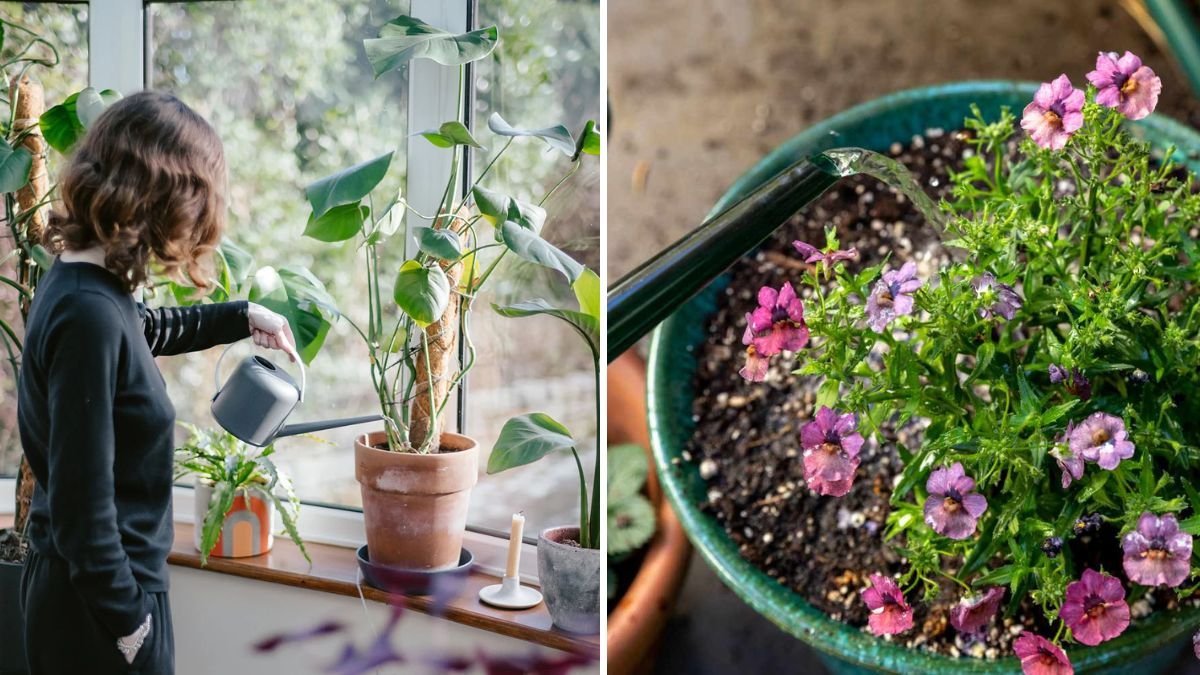Potted plants bring life, color, and fresh air into homes, offices, and urban gardens. However, caring for them requires a careful balance, particularly when it comes to watering. Overwatering or underwatering are among the most common mistakes that can stress or even kill potted plants. Efficient watering is not just about giving water—it’s about understanding each plant’s needs, soil type, pot material, and environmental conditions. Mastering efficient watering ensures healthy growth, strong root systems, and vibrant foliage.
This article explores the best ways to water potted plants efficiently, providing detailed guidance on techniques, timing, soil considerations, and tools to help gardeners maximize plant health and conserve water.
1. Understanding the Needs of Potted Plants
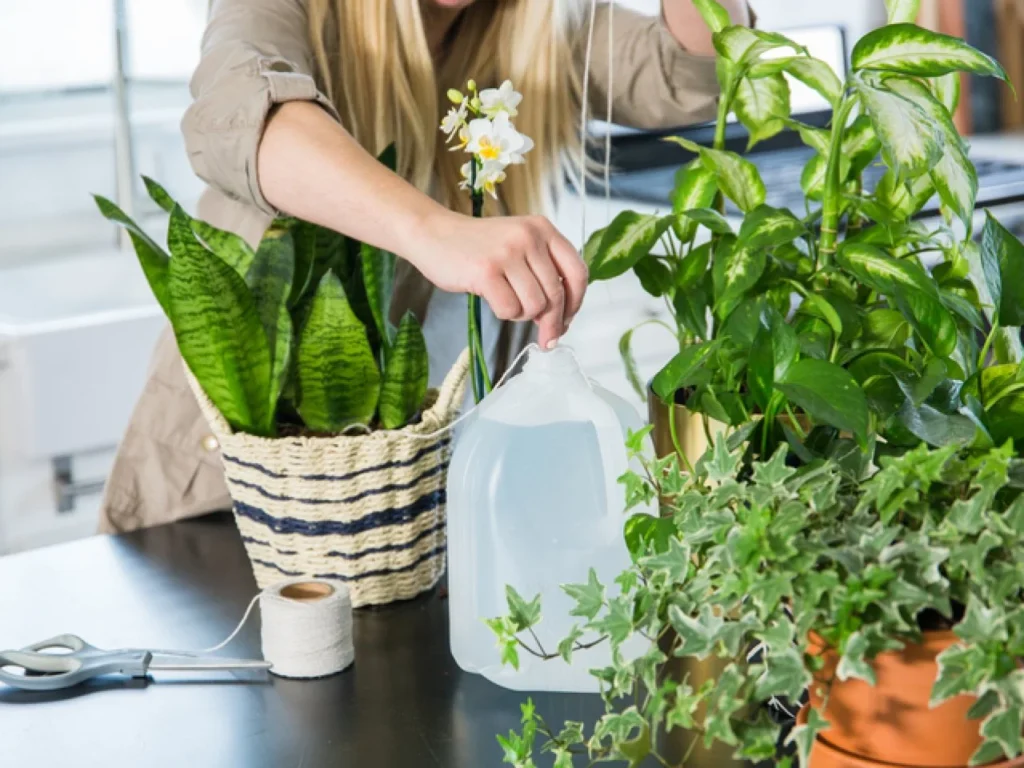
Potted plants differ from garden-grown plants in key ways:
- Limited Soil Volume: Potted plants rely on the soil in the container for nutrients and moisture. Once the soil dries out, roots have nowhere else to grow.
- Faster Drying: Containers heat up more quickly, causing soil to dry faster than garden beds.
- Root Bound Conditions: Roots may fill the pot and compete for water, affecting absorption.
- Drainage Dependence: Proper drainage is critical; poor drainage can lead to root rot.
Efficient watering starts with understanding these unique conditions and tailoring water delivery to the plant’s needs.
2. Choosing the Right Pot and Soil
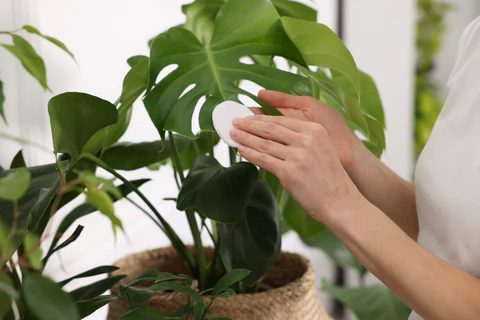
Pot choice and soil composition influence how effectively plants absorb water:
a. Pot Material
- Terracotta: Porous, allows evaporation, reducing overwatering risk but dries faster.
- Plastic: Retains moisture longer, suitable for plants that need consistent water.
- Ceramic or Glazed Pots: Retain moisture but can be heavy; ensure drainage holes exist.
- Self-Watering Pots: Provide a reservoir that allows roots to draw water gradually, improving efficiency.
b. Soil Type
- Well-Draining Mix: Combines potting soil with perlite, vermiculite, or coarse sand to prevent waterlogging.
- Moisture-Retentive Mix: Incorporates coconut coir, peat, or compost to hold water for plants that need consistent moisture.
- Custom Mix: Adjust ratios based on plant type (succulents vs. tropical plants).
Choosing the right pot and soil combination ensures water is absorbed efficiently without wastage or root stress.
3. Determining How Much Water to Give
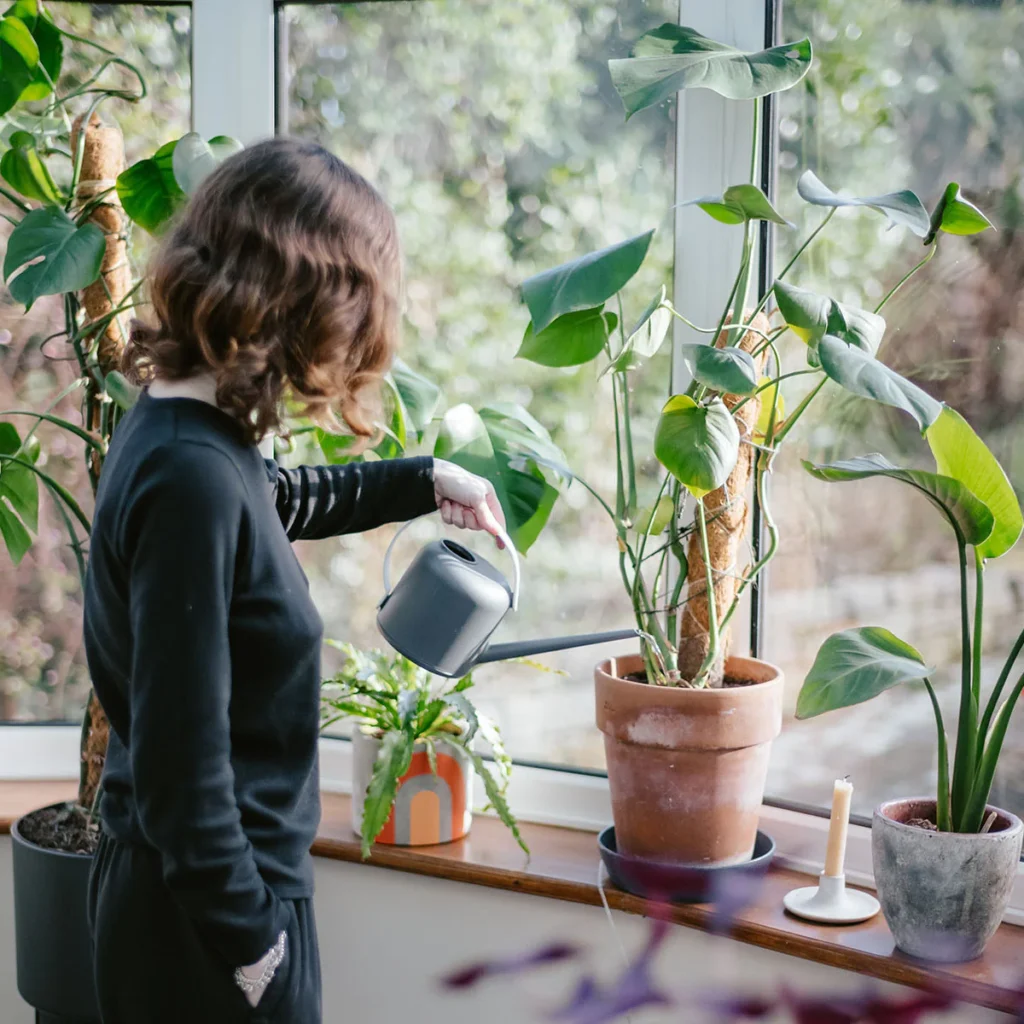
Overwatering is as damaging as underwatering. Efficient watering depends on providing just the right amount:
- Check Soil Moisture: Insert your finger 1–2 inches into the soil. If it feels dry, it’s time to water.
- Observe Plant Signs: Wilting, yellowing leaves, or dry edges may indicate a water deficit. Overly soft or yellow leaves suggest overwatering.
- Water Until Runoff: Water until it begins to drain from the bottom; ensures all roots are hydrated.
- Consider Plant Type: Succulents need less frequent watering; tropical plants require more consistent moisture.
Monitoring and adjusting based on plant needs reduces water wastage and supports healthy growth.
4. Watering Techniques for Efficiency
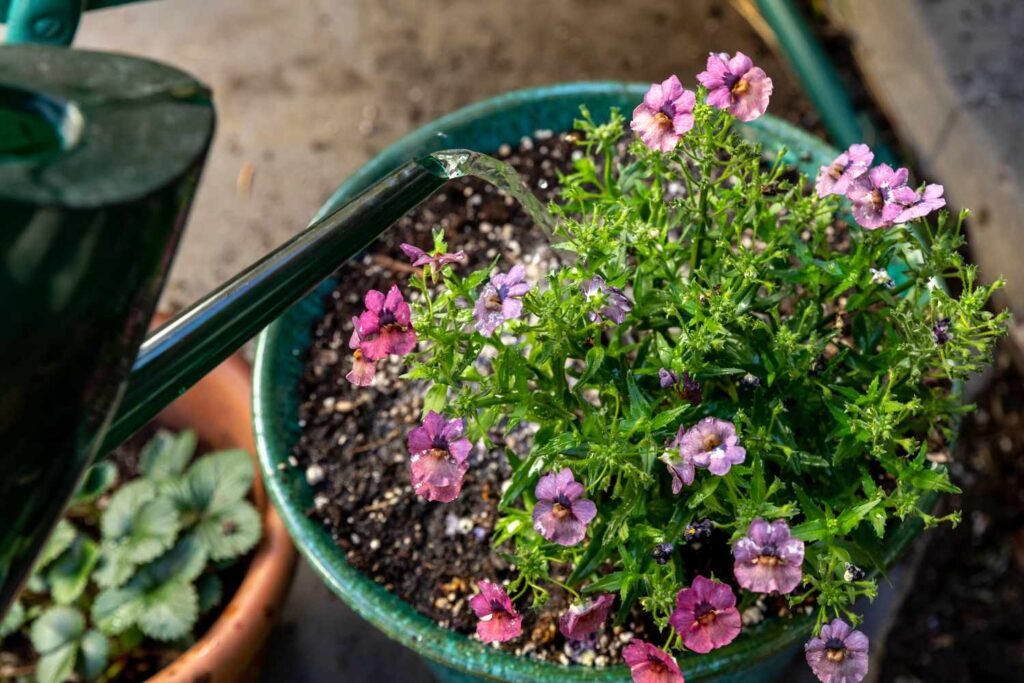
Several watering techniques improve efficiency and effectiveness:
a. Bottom Watering
- Method: Place the pot in a shallow tray of water, allowing roots to absorb moisture through drainage holes.
- Benefits: Encourages deep root growth and prevents wetting foliage, which reduces disease risk.
- When to Use: Ideal for indoor plants or plants prone to fungal infections.
b. Top Watering
- Method: Pour water evenly over the soil surface, avoiding leaves where possible.
- Benefits: Quickly moistens soil, ideal for large pots or outdoor plants.
- Tips: Water slowly to allow absorption, and ensure water reaches the root zone without runoff.
c. Soaker or Drip Systems
- Method: Use drip irrigation or soaker hoses to deliver water directly to the root zone.
- Benefits: Reduces evaporation, ensures consistent moisture, and conserves water.
- When to Use: Outdoor patios, balcony gardens, or multiple pots in one area.
d. Mulching for Potted Plants
- Method: Apply a layer of organic mulch (bark chips, coconut coir, or pebbles) on top of the soil.
- Benefits: Reduces evaporation, moderates soil temperature, and maintains consistent moisture.
- Tip: Keep mulch slightly away from the plant stem to prevent rot.
By combining proper technique with soil and mulch management, watering efficiency increases significantly.
5. Timing Your Watering
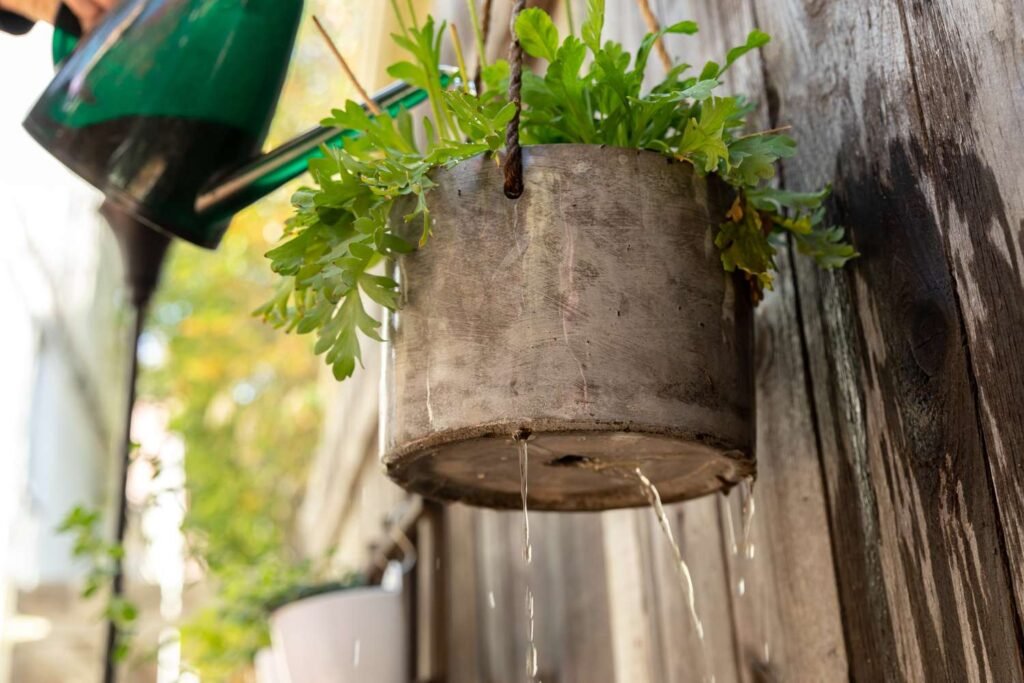
Timing plays a critical role in water efficiency:
- Morning Watering: Watering in the early morning allows roots to absorb moisture before heat and sun cause evaporation.
- Avoid Late Evening Watering: Water left on foliage overnight can promote fungal diseases.
- Consistent Schedule: Check soil moisture regularly rather than following a rigid schedule; seasonal and environmental factors influence needs.
Proper timing maximizes water absorption and reduces waste.
6. Tools for Efficient Watering
Several tools help make watering more precise and efficient:
- Watering Can with Narrow Spout: Directs water to the soil rather than leaves.
- Moisture Meters: Measure soil moisture at different depths to prevent over- or under-watering.
- Self-Watering Pots or Reservoirs: Reduce the frequency of watering while maintaining consistent soil moisture.
- Drip Irrigation Kits: Deliver controlled water to multiple containers simultaneously.
Using these tools helps optimize water usage and ensures healthier plants.
7. Factors Affecting Watering Needs
Watering requirements vary based on several factors:
- Plant Size and Type: Larger plants and leafy tropical plants need more water than small succulents.
- Temperature and Humidity: Hot, dry conditions increase water demand; high humidity reduces it.
- Pot Size and Material: Smaller pots dry faster; plastic pots retain moisture longer than terracotta.
- Seasonal Changes: Reduce watering in winter when plant growth slows and evaporation decreases.
Adapting watering to these variables ensures efficiency and prevents stress.
8. Common Watering Mistakes to Avoid
Efficient watering requires avoiding common pitfalls:
- Overwatering: Leads to root rot, yellowing leaves, and fungal diseases.
- Underwatering: Causes wilting, dry edges, and stunted growth.
- Neglecting Drainage: Pots without drainage holes trap water, suffocating roots.
- Ignoring Environmental Conditions: Watering too frequently in cool or humid conditions wastes water and stresses plants.
- Pouring Water Directly on Leaves: Can encourage disease in susceptible plants.
Being aware of these mistakes allows gardeners to water wisely and support healthy plant growth.
9. Water-Saving Strategies
Efficient watering also means conserving water:
- Group Plants: Placing pots together creates a microenvironment that reduces evaporation.
- Collect Rainwater: Use rain barrels or containers to provide natural irrigation.
- Use Mulch Generously: Mulch retains moisture and reduces the need for frequent watering.
- Optimize Soil Mix: Use moisture-retentive potting soil for plants with higher water demands.
- Check Regularly: Water only when soil is dry to reduce waste.
These strategies reduce water consumption while keeping plants healthy and hydrated.
10. Benefits of Efficient Watering
Efficient watering offers multiple advantages:
- Healthier Plants: Proper moisture supports strong root systems, vibrant foliage, and abundant blooms or fruit.
- Reduced Disease Risk: Avoiding waterlogged soil prevents root rot and fungal infections.
- Conservation: Saves water, which is particularly important in urban areas and during drought conditions.
- Cost-Effective: Minimizes wasted water and reduces the need for replacement plants due to stress.
- Environmental Sustainability: Reduces runoff and helps maintain a balanced garden ecosystem.
Efficient watering benefits both the gardener and the environment.
Conclusion
Watering potted plants efficiently is an essential skill for any gardener. By understanding plant needs, selecting appropriate soil and containers, using the right techniques, timing watering appropriately, and utilizing tools like moisture meters or self-watering systems, gardeners can provide optimal hydration without waste. Mulching, grouping plants, and monitoring environmental conditions further enhance water efficiency.
Efficient watering not only supports healthy growth, abundant blooms, and vibrant foliage but also promotes water conservation, sustainability, and cost savings. With consistent attention, observation, and the use of best practices, potted plants can thrive, turning any indoor or outdoor space into a lush, productive, and sustainable garden.
Mastering efficient watering transforms plant care from a routine chore into a thoughtful, precise, and rewarding practice, ensuring potted plants flourish throughout every season.
